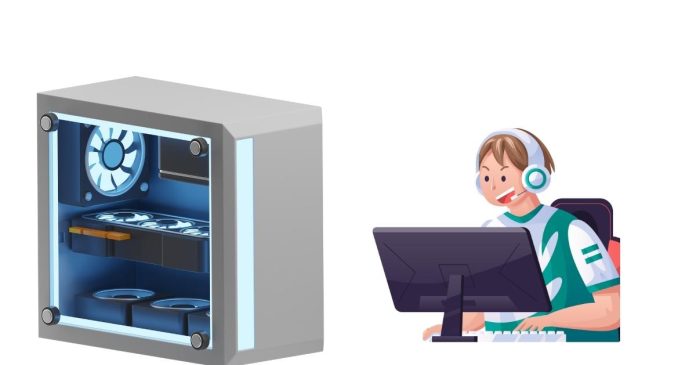If you’re building a PC for the first time and using PCPartPicker to help select your components, here’s a step-by-step guide on how to use the website effectively:
Step-by-Step Guide to Building a PC with PCPartPicker
1. Create an Account (Optional but Recommended) Creating an account allows you to save and track your builds, compare prices, and receive build recommendations based on your budget and needs.
2. Set Your Budget
Before you start selecting parts, it’s helpful to define your budget. PCPartPicker will help you find components within your price range and compare prices across different retailers.
3. Start with the CPU (Central Processing Unit)
Choose a Processor: The CPU is the brain of your PC. You’ll need to decide between Intel and AMD. Intel has a range of CPUs like the i5, i7, i9 series, while AMD offers Ryzen processors.
Consider your needs: If you’re gaming, look for CPUs with more cores (e.g., 6-core or 8-core). For productivity tasks, consider a higher-end processor.
4. Choose a CPU Cooler
Stock vs. Aftermarket: Many CPUs come with a stock cooler. However, if you’re planning to overclock or want quieter performance, an aftermarket cooler might be a better option.
Options: Air coolers (e.g., Noctua, Cooler Master) or liquid coolers (e.g., Corsair, NZXT).
5. Select a Motherboard
Make sure your motherboard is compatible with your CPU (check socket type and chipset compatibility).
Choose between ATX, microATX, or miniITX based on the size of your case and the features you need (USB ports, RAM slots, PCIe lanes, etc.).
6. Pick RAM (Memory)
Capacity: 16GB is ideal for most users, but you may want 32GB if you’re running heavy applications like video editing software.
Speed: Look for DDR4 RAM with speeds around 3000-3600MHz for good performance.
Dual-channel: Two sticks of RAM (e.g., 2x8GB) are preferred for better performance.
7. Choose a Graphics Card (GPU)
For gaming, video editing, or 3D rendering, a dedicated GPU like an NVIDIA GeForce RTX or AMD Radeon is essential.
Be mindful of your budget and ensure your power supply can support the GPU’s wattage.
Popular models include the RTX 3060, RTX 3070, or AMD RX 6700 XT, depending on your performance needs.
8. Select Storage
SSD vs. HDD: SSDs are much faster, and it’s best to use one for your operating system and frequently used applications. A combination of an NVMe SSD (for speed) and a HDD (for mass storage) is common.
A 500GB or 1TB SSD is a good starting point, and a 2TB HDD can be used for additional storage.
9. Choose a Power Supply (PSU)
Ensure your PSU has enough wattage to power your components, and always aim for a bit more headroom (e.g., 650W or 750W for a mid-range build).
Look for quality brands like Seasonic, Corsair, or EVGA. Also, check for 80 Plus certification for efficiency.
10. Pick a Case
Make sure your case supports your motherboard size (ATX, mATX, or ITX). Also, ensure it has good airflow and space for your GPU and cooling system.
Consider cases with good cable management and space for expansion.
11. Consider Additional Cooling
If you plan on overclocking, or if your case has limited airflow, additional case fans or a more powerful cooling system might be needed.
Most cases come with 1-2 fans, but adding more will help with cooling and noise reduction.
12. Opt for Optional Accessories
Optical Drive: Not essential for most users since many programs and games are downloaded online.
Sound Card: Modern motherboards often have good onboard audio, but you can add one for better quality.
Using PCPartPicker’s Features
Compatibility Check: PCPartPicker will automatically check if the parts you choose are compatible with each other (e.g., motherboard and CPU socket compatibility, RAM clearance with the CPU cooler).
Price Comparisons: The site compares prices from different retailers like Amazon, Newegg, and Micro Center, helping you find the best deal.
Build Recommendations: If you’re not sure what parts to pick, PCPartPicker offers pre-configured builds based on your budget and intended use (gaming, productivity, etc.).
Final Steps
Once you’ve selected all your parts, you can review your build and check for compatibility issues.
You can also look at build guides or search for similar builds from other users for inspiration.
When you’re ready, you can proceed to purchase your parts directly from the retailers listed.
Tips for First-Time Builders
Watch tutorials: There are countless YouTube videos that walk you through each step of building your PC, from installing the CPU to cable management.
Take your time: Building a PC can take several hours, so don’t rush. Read manuals, follow guides, and double-check each part.
Static precautions: Use an anti-static wrist strap or work on a non-static surface to protect your components.
PCPartPicker is an excellent tool for planning and pricing out your build, and it helps ensure that all parts are compatible before purchasing. Good luck with your build!



